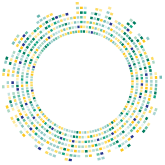Timeline
- Date request received: September 2016
- Date of Experts Working Group kick-off meeting: 04/07/2017
- Call for Knowledge: March–April 2017
- Call for Experts: September-October 2017
- Date of experts selection: November 2017
- Date of the online EWG kick-off meeting: November 2017
- Date of the first meeting with the requesters and EKLIPSE KCB and methods experts: March–April 2017
- Finalisation: June 2020
In September 2016, a request was received by Expert Working Group Biodiversity & Health, 3rd National Action Plan on Health and Environment (PNSE3) – Ministry in charge of the Environment (MTES), France, and the World Health Organization (WHO).
This request aims to provide recommendations regarding the design, management, and creation of natural spaces in urban or suburban areas to promote urban inhabitants’ mental health.
Scoping phase
Initially, the requester suggested providing the current knowledge of green spaces’ effects on mental health and physical health. Based on the discussion results between the KCB, the requesters, and the Call for Knowledge (CfK) carried out on April-May 2017. It was agreed to refine the request question to target mental health and psychological well-being and omit physical health (unless linked to mental health in existing research). Psychological disorders were also included in the request’s scope, but indoor greenness (houses, workplaces) would not be considered. The requester has a specific interest in positive impacts to generate recommendations for designing and managing green and blue spaces in cities or nearby neighbourhoods and initially required a systematic review approach.
The CfK specifically resulted in the identification of 6 reviews, 18 articles and about 30 other references provided by experts through the KNOCK Forum. Based on the scoping process and the Call for Knowledge, a Document of Work (DoW) was compiled.
Answering the request
Selection of an Expert Working Group (see above)
To answer this request, Eklipse sent out a Call for Expertise (CfE) and selected 11 experts in November 2017. These experts covered a broad range of expertise, gender and geographical representation to form the Eklipse Expert Working Group (EWG).
The next step was for the Expert Working Group to develop a methodological protocol based on the DoW, including the scientific aspect of a thorough literature search and possible appraisal. From the identified methods, the expert working group decided on performing a systematic review that will follow the following steps:
1) Eligibility criteria for the articles will be formulated
2) A systematic search strategy will be employed to yield relevant articles
3) Meta-data will be extracted and coded for each eligible study
4) Each study will be critically appraised
5) A narrative and descriptive synthesis will be performed
6) Outcomes of the synthesis will be discussed
Methods Protocol
During the scoping process, the EKLIPSE Methods Expert Group (MEG) and the Knowledge Coordination Body (KCB) Health group discussed potential knowledge synthesis methods, which can be applied for this request. Building on the discussions and materials prepared by the EKLIPSE MEG, the following methods were suggested for the different steps of the request:
- Cochrane-style systematic review
- Solution scanning, meta-analysis
- Rapid evidence assessment
- Causal Chain Analysis
- Systematic review
After analysing the available knowledge and other elements like the purpose of the question, time and resources available, consequences and controversies, among others (to have more information on methods criteria section, please follow this link), the EWG support by the MEG and considering the open consultation on the methods protocol decided to perform a systematic review. The systematic review allowed the group to analyse the scientific literature that focused on the influence of type and characteristics of green and blue spaces concerning mental health and wellbeing benefits in cities and sub-urban areas in an interdisciplinary way. For practical reasons, the EWG decided to perform two separate reviews: blue and other for green spaces.
Finalisation
The draft report developed by the expert working group to answer the question of “which types and components of urban and peri-urban blue spaces have a significant impact on human mental health and mental well-being” was released for external review (22nd January 2020-28th of February 2020). The second systematic review draft to understand “which types and components of urban and peri-urban green spaces have a significant impact on human mental health and mental well-being” was released in summer 2020. The EWG has integrated the comments from these processes, and the final reports are publically available.




